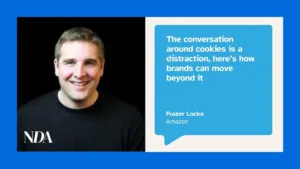Christian Ward, EVP & Chief Data Officer, Yext
In the years leading up to 2025, global data creation is projected to grow to more than 180 zettabytes – according to the latest research from Statista. With more and more people working and learning remotely,, the total amount of data being created, captured, copied and consumed globally continues to skyrocket..
At the same time this amount of information explodes, people’s ability to process that information in a meaningful way is declining. This concept is called the Information Overload Paradox; with quantity crowding out quality, there is an abundance of poor-quality information and – for both consumers and businesses – trying to manage and make sense of all that data is a staggering task.
Not all data is created equally
Marketers can only deliver the best customer experiences when they truly understand their customers – and this can only be achieved with the help of data. There are several types of customer data, and while they can all help build better experiences, they are not all created equal.
We’ve all heard of first-party, second-party and third-party data. These are all terms that marketers and organisations are all too familiar with. However, there has always existed a dataset of better quality but often overlooked: zero-party data. As coined by Forrester research, zero-party data is defined as “data that a customer intentionally and proactively shares with a brand, which can include preference centre data, purchase intentions, personal context, and how the individual wants the brand to recognise her.”
Examples of zero-party data include data a consumer explicitly provides, such as communication preferences or the types of information they want to receive. Interests are another example, with a consumer often given the opportunity to tell a brand what things they are interested in, such as pizza, gifts for teenagers, or things to do on holiday in Italy.
How to fuel marketing efforts using zero-party data
As zero-party data comes straight from the source, and is voluntarily provided by the customer, it is more accurate, reliable and trustworthy than other forms of data.
It currently goes under the radar as businesses focus on the impact of third-party and first-party data – but it’s a valuable, often underestimated resource that can provide marketers with useful insights into customer habits, without doing any form of tracking.
The best way to collect zero-party data is to leverage tools that make it easier for customers to tell you exactly what their intent is. For example, a search bar on your website is an example of a one line questionnaire to the customer, and should ask them, “what can we help you with today?” Another example would be through a survey, customised product settings, or even a free resource like an eBook or a case study. The process of zero-party data collection offers a direct interaction with the customer, helping to build trust whilst gathering data that can fuel more effective future interactions.
There is also an important privacy factor to keep in mind. With regulations such as GDPR putting a heightened focus on consumer consent and privacy, and browsers and applications phasing out third-party cookies or trackers, data knowingly and voluntarily provided by consumers has become invaluable.
Once marketers have collected valid zero-party data, they can use it to deliver truly personalised experiences that help improve the customer journey. By letting consumers share directly their thoughts and interests, marketers can respond appropriately,thereby restoring consumer trust in this age of too much information. This might manifest itself in the form of personalised e-commerce campaigns or tailored on-site search options that call upon customer preferences with natural language understanding (NLU).
When aiming to deliver a successful zero-party data strategy, marketers should ensure it’s aligned with their overall customer data and content strategy – using existing systems to integrate zero, first, and third-party data where (and only when) appropriate.. By bringing this all together, marketers can create engaging, personalised customer journeys that drive sales while respecting data privacy.








